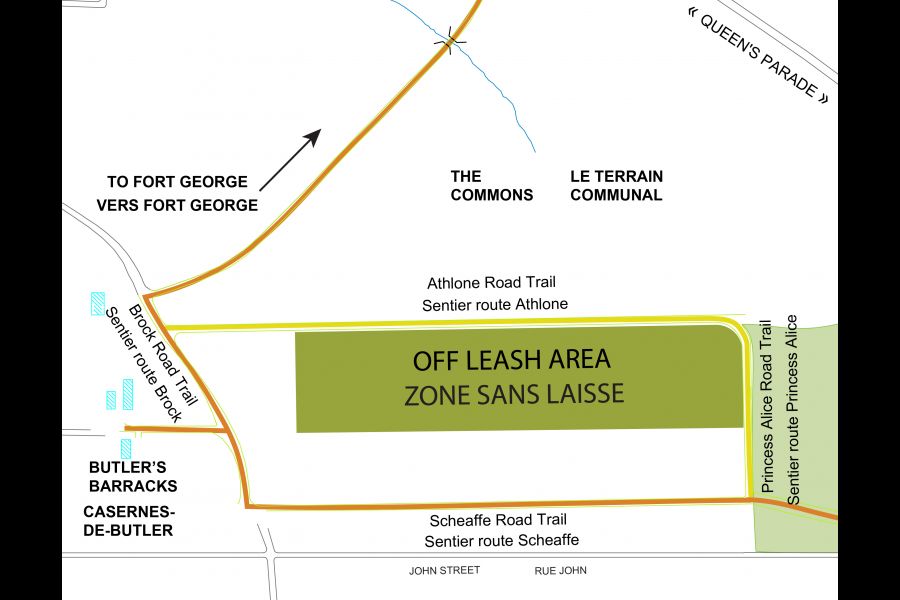Dogs will continue to be allowed to run free on part of the Commons in Niagara-on-the-Lake, but Parks Canada is restricting off-leash pets to the large field just north of John Street.
Extensive new signs will be installed to make clear exactly where dogs can roam off-leash, says Lisa Curtis, Parks Canada’s superintendent of national historic sites for southwestern Ontario.
Pets will be welcome in most other trail areas, including forested sections, but only if they are leashed, she said.
Besides signs on the property, the agency's websites and social media accounts will be used to help educate visitors about the new expectations.
Curtis said the off-leash areas will be available to dogs “for the time being” – so long as people follow the rules. Parks Canada will likely give it a year or two before deciding if any more changes are needed, she said.
She emphasized the Commons area and its trails are part of a “multi-use” facility, not just a dogs-only park. So everyone needs to try to get along.
Owner and pet behaviours will be monitored by staff and park wardens to ensure compliance.
If people flout the restrictions, they will be “educated” about the requirements at first but ultimately they could face fines of $600 or more, depending on the offences, Curtis said.
While there are no plans to outright ban dogs from running off-leash on the Commons, it will depend on how people adapt to the changes, she said in an interview. “Time will tell.”
A ban would be a worst-case scenario, she added. “Hopefully we don't have to do that.”
“I'm really counting on everyone to help with this. We're trying our best to help everybody have the experience that they want to have at our national historic sites and historic properties.”
Signs will be going up in the coming weeks, but in the meantime some verbal warnings have already been issued, she said.
The changes follow a months-long review after complaints about dog owners not picking up after their pets, conflicts between owners and other users, and concerns about dogs chasing wildlife.
Dogs will have to be leashed on all other areas of the Commons and at all other Parks Canada facilities in the area, including Butler's Burial Ground, Fort George, Niagara Shores Park and Queenston Heights, Curtis said.
At the Commons, dogs will be welcome on the field in “basically the areas where we cut” the grass but signs will make it clear exactly what spots are permitted and what sections are off-limits, she said.
The federal agency has tried to strike a “balanced approach” that lets dogs run at the only off-leash area in NOTL but also protects the historic, heritage and environmental areas of the Commons property, Curtis said.
“We're going to increase communications so we're going to better inform visitors and the local community about what activities are permitted in what areas in our shared heritage properties and Niagara-on-the-Lake,” she said.
Dog owners will need to check the signs on the Commons to know exactly where pets are permitted. A map produced by Parks Canada shows that dogs will be able to run free in a large portion of the site.
The Commons is “a beautiful place. I was just there on Friday. There's so many people and dogs enjoying the grounds and the sites,” she said.
“I want to see that continue, where people are having a great experience,” but to achieve that “balance” the off-leash area needs to be restricted.
Pet owners will need to keep control of their dogs, leashes are to be no longer than three metres and basic etiquette rules need to be respected, she said.
“I know people often think, what was the big deal? You know the dogs running through the bush or running through the grasses or the fields, but we have hundreds of dogs doing that over the course of a week, over and over again, all year long,” Curtis said.
“The stress on wildlife is significant” and likewise on visitors who might not like dogs, she said.
“So, that's why balancing all this and our species at risk and wildlife is extremely important.”










